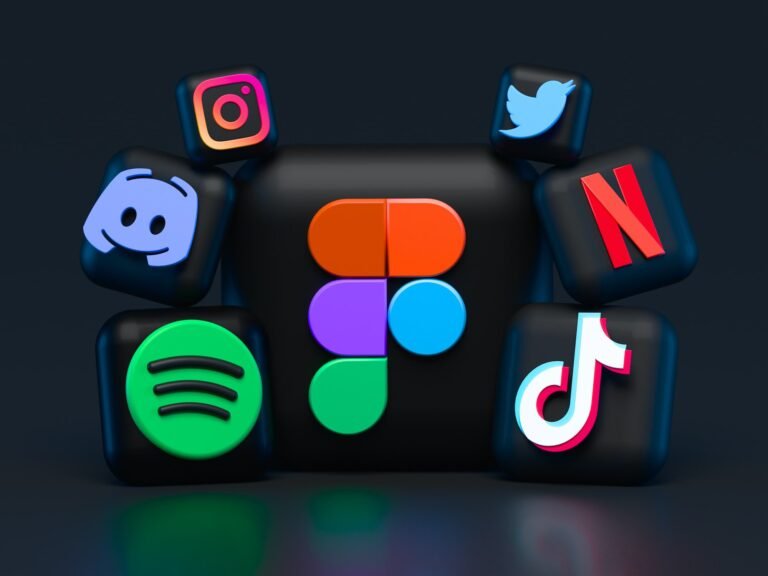SEO Digital Marketing: Comprehensive Guide for Increased Traffic
Are you looking to maximize your website’s traffic and growth? Are you interested in getting the most out of SEO digital marketing? This comprehensive guide is here to provide an overview of all the essential elements needed for a website’s success. With this, you will create a powerful online presence that will drive more customers and leads than ever before.
From basic concepts such as keyword research, link building, content creation, social media optimization, analytics tracking and more, this guide has it all. Start maximizing your traffic today with our helpful tips on digital marketing and SEO!

What is Digital Marketing?
Digital marketing is the process of promoting products or services through digital channels. Such channels are search engines, websites, social media, email, and other online platforms. Effective strategies such as content creation, optimizing for certain keywords, or creating campaigns can help your website reach a wider audience than ever before.
Digital marketing is very important in a business because it allows you to reach potential customers and get your message across faster. Digital marketing is also beneficial because it gives you more control over who sees your message and allows targeting specific demographics such as age, location, gender, etc.
What is SEO in digital marketing?
SEO stands for search engine optimization. It is where you aim to increase organic traffic to your website by tweaking pages to improve search engine rankings, creating new content to target keywords, and improving your site to be better understood by search engine crawlers.
Search engine optimization (SEO) is the process of optimizing web pages and their content to rank higher on search engine result pages (SERPs). It is an important part of any digital marketing strategy because it determines how visible your website will be in organic search results.

What are the 4 types of SEO?
The four types of SEO include:
On-page SEO
It refers to all measures that you can take directly within the website to improve its position in the search rankings. On-page SEO focuses on optimizing individual web pages for search engine rankings, such as the use of title tags and meta descriptions.
Off-page SEO
Off-page SEO refers to SEO tactics applied outside of a website to improve its rankings. The SEO technique used for off-page SEO is backlink building since quality backlinks to your site from external sites tell search engines that your site is valuable and high-quality which helps to build authority. There are many tactics to backlink building, and some of the current best practices include guest blogging, creating lots of infographics that will be highly shared, and using influencer marketing in your content.
With off-page SEO, you focus on your website’s authority. While your website or domain authority isn’t an official Google ranking factor, it can help boost your rankings by creating a site with valuable content that people and websites link back to. This process can involve earning links from other websites, shares on social media platforms, and other mentions of your website across search engines.
Technical SEO
It refers to optimizations that make your website easy for search engine crawlers and users to use and understand. Search engine crawlers index pages and websites for search engines. Simply said, search engine crawlers help search engines store your page and website data to use for future searches.
Local SEO
It is a type of SEO that focuses on optimizing websites and content for local search results. Local businesses with physical locations need to optimize their websites for local searches as they often have an advantage over more general competitors.
Along with using local keywords, other local SEO best practices include claiming directory listings. Aside from that, you can also create location-specific pages for your site, and pages for your business (also called doorway pages ) on Google My Business local directories and Google Maps.

How do search engines work?
Search engines work by sending out robots called “crawlers” that crawl the web and collect data about websites. The crawlers then send the collected data back to the search engine, which uses algorithms to rank indexed pages.
The most important factor in determining a website’s position on the SERP is relevance. The more relevant a website is to the search query, the higher it will rank in the SERP. Additionally, other factors such as site speed and mobile friendliness can influence a website’s ranking on the SERP.
What are the three main aspects of why SEO is important?
Increased Visibility
SEO can help you rank higher in search engine results, which will increase the visibility of your website and business. This increased visibility can lead to more web traffic and potential customers.
When you focus on SEO efforts, you get more visitor traffic to your website. This increases your brand awareness and encourages more people to purchase your products and services.
Better User Experience
SEO helps to improve user experience through better site navigation, faster loading times, and optimized content that makes it easier for users to find what they are looking for.
Cost-Effective
SEO is a cost-effective way to reach more potential customers and build brand awareness without having to spend money on paid advertising.
How do I optimize my website for SEO?
- Conduct keyword research to identify popular search terms related to your business or website.
- Optimize site pages with meta titles, descriptions, and keywords to ensure your content is relevant and optimized for search engine algorithms.
- Create valuable content that is engaging and informative for readers, while incorporating targeted keywords into the text.
- Build links to your website from other websites to improve your website’s credibility and visibility.
- Leverage social media platforms such as Facebook, Twitter, and Instagram to promote content and reach a wider audience.
- Monitor your progress by tracking analytics such as page views, bounce rate, and conversions.
- Stay up to date with SEO best practices and make sure your website is optimized for mobile.
- Regularly review your content to ensure it is still relevant and engaging for users.
- Perform regular site maintenance and keep your website up to date.
- Hire RDZ Technology Inc. to do a website audit and make sure your website is optimized.

What are the tools needed to measure my SEO?
There are free tools you can use to measure your SEO but the most essential tools needed to measure SEO are:
Google Search Console (GSC)
Google Search Console provides insight into how your website is performing on search engine results pages. It can help you identify high-value keywords, monitor errors, and understand your backlink profile.
It provides information on how Google crawls, indexes, and serves websites. This can help website owners to monitor and optimize search rankings. There is no need to log in to the tool every day. If new issues are found by Google on your site, you’ll receive an email from Search Console alerting you.
Google Analytics
Google Analytics is a powerful tool that collects detailed website data. It helps you track visitor behavior on your website, measure conversions and ROI, and monitor site performance. Additionally, it provides insights into how visitors find your website, their geographical location, what device they are using to access the site, and much more.
Ahrefs
Ahrefs is a comprehensive SEO tool that helps you measure your website’s performance in search engine results. It provides detailed information on keyword rankings, backlinks, and traffic sources. Additionally, it can help you identify new keywords to target and monitor competitors’ activities.
Screaming Frog
Screaming frog is a powerful web crawler that helps you analyze the structure of your website and identify any SEO issues such as broken links, duplicate content, and more.
This tool crawls through webpages and collects information about the structure, content, and other technical aspects of a page that can affect its rankings on SERPs.
SERP Checker
SERP Checker is an SEO tool that helps you monitor your website’s position on the search engine results page (SERP). It tracks keyword rankings and shows whether or not your website can be found in the top 10 results for a specific query. Knowing where your website stands on SERPs can help you identify any issues with SEO and take appropriate action to improve it.

Uptime Monitor
This tool checks your website’s uptime to ensure it is always accessible and available for visitors. It can also alert you if any issues may affect the performance of your website.
Google PageSpeed Insights
Google PageSpeed Insights provides insights into how quickly a page loads on desktop and mobile devices, as well as suggestions on how to optimize the page’s speed.
Moz Pro
Moz Pro helps you optimize your website for SEO and measure its performance over time. It includes a keyword research tool, backlink analysis, link-building tools, and more.
These are some of the most essential tools needed to measure SEO. Additionally, many other tools can be used to monitor website performance such as SEMrush, SE Ranking, KWFinder, etc. It is important to select the right tool that meets your specific needs and budget.
What is keyword research?
Keyword research is the process of identifying and analyzing words and phrases related to a particular topic that people are searching for on search engines.
When conducting keyword research, it is important to consider factors such as search volume (how many people are searching for this term), competition (how difficult it is to rank for this keyword), and relevance (how relevant this keyword is to what you are offering). With the right keywords, you can ensure that your website ranks highly in search results and drives more traffic to your website.
What are the types of keywords?
• Short-tail keywords
These are broad terms that can generate a lot of organic search traffic.
• Long-tail keywords
These keywords are more specific phrases that often have lower competition and higher conversion rates.
• Local keywords
These are location-specific words or phrases used to attract local customers to your business.
• Brand keywords
These keywords are words or phrases related to your brand name that can help increase visibility.
• Primary keywords
These are the most important terms you want to target in your SEO strategy.
• Secondary keywords
These keywords are less important terms used to supplement your primary keywords.

What are the tools needed for keyword research?
Several tools can be used for keyword research, including:
- Google Ads Keyword Planner
- Ahrefs Keywords Explorer
- SEMrush Keyword Magic Tool
- Moz Keyword Explorer
- KWFinder
- Ubersuggest
These tools provide valuable insights into relevant keywords, including search volume, competition level, and relevance. They can help identify new keyword opportunities and optimize existing ones for better search engine rankings. With the right keywords, you can ensure that your website attracts more quality organic traffic.
Why is keyword research important in an SEO strategy?
Keyword research is an essential part of any SEO strategy as it helps you to optimize content and build links that will help you rank higher in search engine results. By incorporating relevant keywords into your content, you can ensure your website is visible to potential customers. Additionally, keyword research can help you identify new keywords that you may not have considered before, giving you a better chance of ranking highly in search engine results.
Keyword research can also be used to create targeted ad campaigns for significant traffic and conversions. By targeting the right keywords, you can ensure your ads are seen by potential customers who are interested in what you have to offer.
How do you do link building?
Link building is a process that involves creating links from other websites to your own. This can be achieved by submitting guest posts, engaging in online collaborations, and leveraging social media platforms.
When done correctly, link building can help you increase website traffic, build brand awareness, and improve search engine rankings. Additionally, it can also help to establish relationships with other websites and industry influencers. However, it is important to be mindful of the quality of the links you are building. Low-quality links from spam websites can hurt a website’s search results.
To create high-quality links, you should focus on creating content that other websites would want to link to. You should also look for opportunities to collaborate with other websites and use social media marketing to build relationships and create natural links. Additionally, you can utilize link-building tools such as Ahrefs or SEMrush to identify potential link opportunities and ensure the quality of backlinks.

What is search engine marketing?
Search engine marketing (SEM) is a form of digital marketing that involves using search engine optimization (SEO) and pay-per-click advertising (PPC) to drive more traffic to a website. Search engine marketing is focused on increasing a website’s visibility in search results, which can help businesses increase their website traffic and conversions.
What is the difference between search engine optimization with search engine marketing?
The key difference between SEO and SEM is that SEO focuses on organic traffic while SEM uses paid advertisements to increase website visibility. SEO relies on optimization techniques such as keyword research, content optimization, link building, etc.
On the other hand, SEM includes tactics such as PPC advertising and other paid search engine marketing solutions. Additionally, SEO focuses on improving rankings in SERPs while SEM is focused on driving more website traffic. Both tactics can be used together to create a comprehensive digital marketing strategy.
For successful SEO and SEM, businesses need to create content that is optimized for search engines, providing an excellent user experience, and building links from other websites.
By leveraging SEO and SEM tactics together, businesses can increase their website visibility and drive more traffic to their websites. With the right strategy and tools in place, they can ensure that they are getting the most out of their digital marketing efforts.

Why is SEO strategy focused on the Google search engine?
Google is the world’s most popular search engine, with over 90% of all web searches taking place on it. As such, businesses need to optimize their websites for Google if they want to ensure their website is visible in search engine results.
SEO strategies should also focus on other search engines, such as Bing and Yahoo. While Google is still the most popular search engine, optimizing your website for multiple search engines can help you increase visibility and reach more potential customers.
Because different search engines have different algorithms and criteria for ranking websites, it is important to tailor your SEO strategy for each search engine if you want to maximize visibility.
What is social media optimization?
Social media optimization (SMO) is a form of digital marketing that involves optimizing content for social media platforms. This can include creating and sharing content on social networks such as Facebook, Twitter, and Instagram to increase website visibility and engagement. Additionally, SMO focuses on building relationships with industry influencers who can help promote your content and build more links for your website.
How do you do social media optimization?
Social media optimization starts with creating content that is interesting, relevant, and shareable. Additionally, businesses need to optimize their content for different social networks by using hashtags, visuals, and other tactics. They should also focus on building relationships with industry influencers who can help promote their content and help build more links for their website.

What are SEO best practices?
- Check your website for things that weren’t initially addressed, like missing image alt text.
- Look out for changing keywords and new search intent. After a few months, track how your blog posts are ranking, and which keywords they’re ranking for. This can help you adjust subheadings and copy to leverage new search intent that your audience may be interested in.
- Add more editorial value to your old content. Sometimes, you’ll find that a post is completely out of date. In this scenario, you should go beyond the average historical SEO update and give it a full refresh. You can do this by updating the out-of-date blog post.
- Use sub-directory root domains (example.com/events) versus sub-domains (events.example.com).
What are the things that search engines don’t want?
Search engines do not want websites that use manipulative techniques to boost their rankings, such as keyword stuffing or cloaking. They also do not want websites that contain spammy content, broken links, or irrelevant content. Additionally, search engines don’t want websites to have too many low-quality backlinks from spam websites as this can hurt a website’s organic search engine rankings. Finally, search engines don’t want websites to use black hat SEO tactics such as link buying or automated programs to post comments.
Takeaway
Search engine marketing is a form of digital marketing that uses SEO and PPC to increase website visibility in search engine results. SEO focuses on organic traffic while SEM uses paid advertisements. Additionally, businesses should focus on social media optimization (SMO) by creating content for social networks and building relationships with industry influencers. Finally, they should follow SEO best practices such as optimizing old content, tracking keyword changes, and avoiding manipulative techniques.
Putting SEO and SEM into practice takes time, skill, and effort. If you do not have the time to learn how to optimize websites, you can let the experts do it for you! RDZ Technology Inc. specializes in digital marketing solutions and can help you create an effective SEO and SEM strategy that will increase your search engine visibility and drive more traffic to your website. Contact us today for a free consultation!








